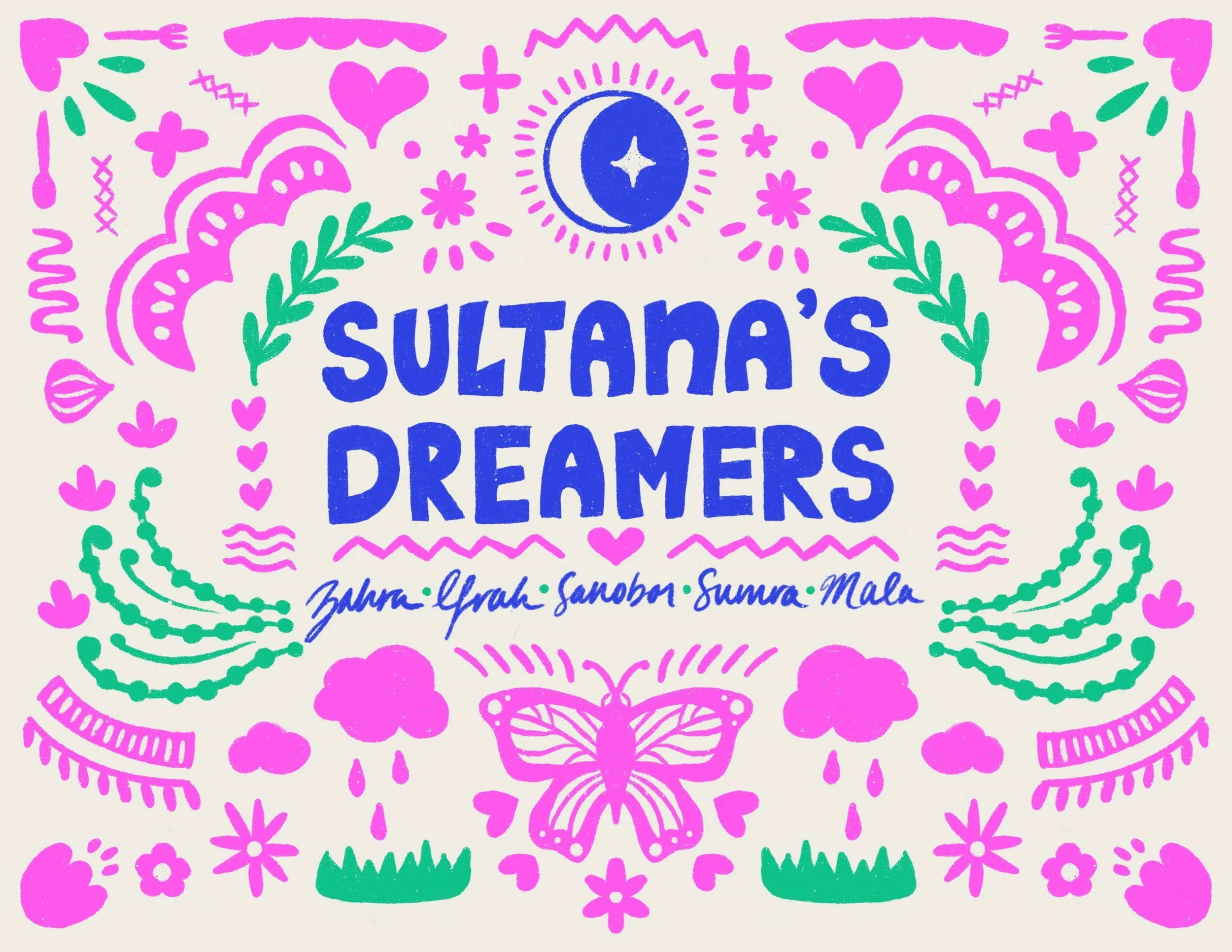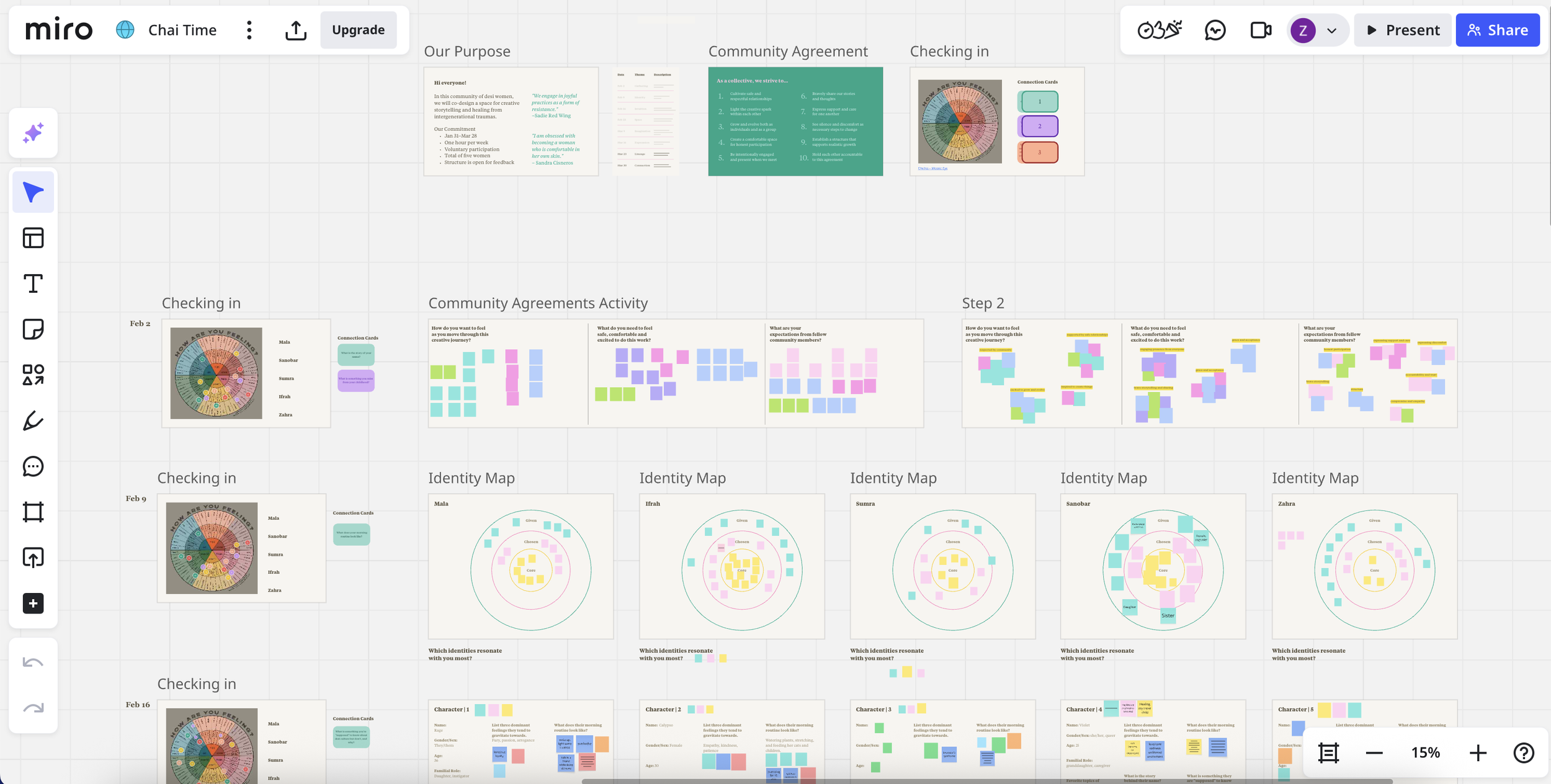Background
Sultana’s Dreamers was named after the short story, Sultana’s Dream by Bengali feminist pioneer, Begum Rokeya. In the story, she writes about a feminist utopia where South Asian women are free from the oppressive male gaze. She imagines a world where the bodies and sexualities of South Asian women are controlled not by those around them, but by themselves. South Asian-American women today still experience the same kind of policing of their bodies that in turn, stifles their personal expression and understanding of themselves as individual beings.
Experience Design
After hours of research, conversations and reading, I designed an experience with members of my community. I worked with five South Asian-American women including myself to explore how storytelling, creativity and community can unlock ways of intergenerational healing from colonial traumas experienced by our South Asian ancestors. Since this project occurred during the COVID-19 pandemic, we met virtually over Zoom and used the platform Miro to create our work.
Visual Design
Both the social design and visual design of my thesis worked harmoniously to create a welcoming and familiar environment for South Asian women who are used to the colorful craft and patterning of their culture.
Sultana’s Dreamers
SVA thesis project / 2022In May 2022, I presented my work at the SVA Theater along with my classmates to an audience of friends, family, and members of my community. The presentation summarized my thesis, analysis and impact of my work for the previous two years. The slide decks were designed to be minimal in order to encourage audience members to listen and reflect within the moments of both silence and sound.
Thesis Presentation
Each week, our group of five women met for one hour over Zoom and used the virtual space of Miro to participate in activities that encouraged creative storytelling and fostered community.
Miro board
Ritual design
To ground our gatherings in intentionality and purpose, we began each meeting with a ritual: a five-minute emotional check-in using the Feelings Wheel, followed by a Connection card activity adapted from a co-designed game.
These questions, which deepened in vulnerability over time, encouraged personal storytelling and sparked meaningful conversation. This recurring structure helped us tap into emotional depth and created a reliable rhythm that made space for surprise, connection, and growth.









